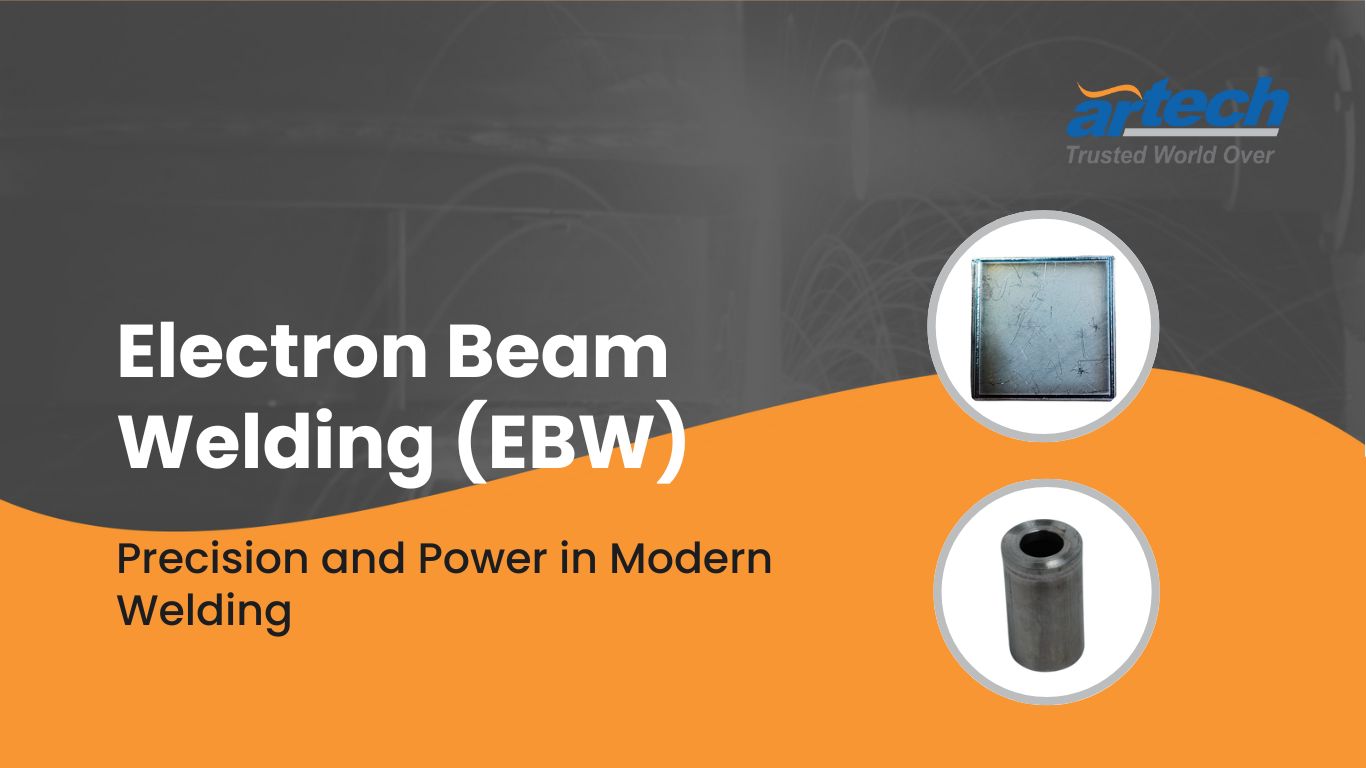Electron Beam Welding (EBW) is a cutting-edge welding process that uses a high-velocity beam of electrons to create strong, precise welds. At Artech Welders, we know that choosing the right welding method can make or break a project. Let’s dive into what makes EBW stand out, its pros and cons, and how it can benefit your next project.
What Is Electron Beam Welding?
EBW uses a focused beam of electrons to melt and fuse metals together. This process is incredibly precise, making it ideal for welding delicate parts or complex designs. Unlike traditional methods like MIG or TIG welding, EBW can achieve deep penetration with minimal distortion, often in a single pass. It’s also fast—perfect for high-volume production.
However, EBW isn’t for everyone. The machinery is complex, requiring skilled operators and regular maintenance. Plus, the process typically happens in a vacuum chamber, which adds to the cost but ensures clean, contamination-free welds.
How Does EBW Work?
Here’s the science behind it: An electron gun generates a beam of high-velocity electrons, which are focused using magnetic fields. When these electrons hit the workpiece, their kinetic energy turns into heat, melting the metal and creating a weld. The process usually takes place in a vacuum chamber to prevent the electron beam from dispersing.
EBW can be adjusted for different power levels:
- Low Power: For ultra-fine welds as small as 20µm.
- Medium Power: For weld thicknesses between 1mm and 20mm.
- High Power (Keyhole Mode): For deep welds, penetrating up to 300mm of steel.
Recent advancements even allow welding outside the vacuum chamber, adding flexibility for larger workpieces.
Materials and Applications
EBW is versatile, capable of welding a wide range of metals, including dissimilar ones. Commonly welded materials include:
- Aluminium
- Stainless steel
- Titanium
- Copper
- Nickel alloys
This versatility makes EBW a go-to choice for industries like aerospace, automotive, and medical devices. For example, it’s perfect for welding transmission assemblies or small electronic components where precision is critical.
EBW vs. Laser Welding
While EBW and laser welding share similarities, they’re not the same. Here’s how they stack up:
- Heat Source: EBW uses electrons; laser welding uses photons.
- Environment: EBW typically requires a vacuum, while laser welding can be done in open air with gas shielding.
- Speed and Efficiency: EBW is faster and more energy-efficient, converting up to 85% of electrical input into usable power compared to laser welding’s 40%.
Advantages of EBW
- Precision: Ideal for delicate or complex assemblies.
- Deep Penetration: Can weld thick materials without filler metal.
- Clean Welds: The vacuum environment prevents contamination.
- Versatility: Can join dissimilar metals with ease.
Disadvantages of EBW
- Cost: High initial investment and maintenance.
- Skill Requirement: Needs highly trained operators.
- Size Limitations: Traditional EBW is constrained by vacuum chamber size.
- Safety: Precautions are needed to protect against radiation.
When to Choose EBW
EBW shines in projects requiring precision, deep penetration or the ability to weld dissimilar metals. It’s especially useful in industries like aerospace and medical devices, where quality and repeatability are non-negotiable. However, for smaller projects or those with tight budgets, traditional welding methods might be more practical.
At Artech Welders, we believe in using the right tool for the job. EBW offers unmatched precision and versatility, but it’s not a one-size-fits-all solution. If you’re considering EBW for your next project, let’s talk. Our team can help you weigh the pros and cons and determine if EBW is the best fit for your needs.

